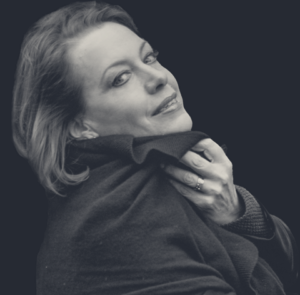According to Mary Garden’s autobiography, Claude Debussy first encountered the Scottish-born diva at the Opéra Comique. After rehearsing her at the piano in a few scenes from his newly completed opera, Debussy said to Garden: “To think that you had to come from the cold far North to create my Mélisande.” He then turned to the theater’s impresario and exclaimed: “I have nothing to tell her.”
This 1983 Met broadcast of Pelléas et Mélisande (included in James Levine: Celebrating 40 Years at the Met – CD Box Set), features an Egyptian-Greek enchantress whom Debussy may also have found similarly beyond reproach: lyric soprano Jeannette Pilou.
A specialist in French opera, Pilou was returning to the Met after a six-year absence. She had been a fixture there throughout the final years of the Rudolf Bing regime; in addition to Micaëla, Juliette and Marguerite, she also sang Susanna, Zerlina, Violetta, Nannetta, Mimi, Butterfly and Nedda during her almost 20-year career with the company. I had the great pleasure of seeing her Butterfly and Manon in my youth and Pilou’s exotic beauty and charisma left an indelible impression.
The role of Mélisande exploits all the special qualities of Pilou’s artistry. Her sung French is exquisite and the delicate, lavender-colored quality of her timbre conveys both the latent sensuality and “grande innocence” of the character. Pilou’s Achilles heel was a recalcitrant top register and the voice could spread under pressure. Fortunately, the part is neither high nor loud and allows Pilou to score one textual and musical point after another.
Interpretatively, Pilou has a gift for understatement. Her characterization is refreshingly opaque, avoiding the trap of obviousness and emphatic underlining that so many singers fall into. Throughout, her cool, limpid tone exudes a bewitching femininity. This is a wonderful souvenir of Pilou. She made only one commercial recording (Micaela in the Erato Carmen with Crespin), so those of us who recall her gentle art with pleasure are indebted to the Met for making this broadcast available.
She is well-partnered by the American baritone Dale Duesing as Pelléas. Duesing was an attractive, versatile “kavalier baritone” who never quite garnered the recognition he deserved. He is an interestingly masculine, almost brash Pelléas. He manages the upper reaches of the role better than most baritones and artfully resorts to head voice on only one or two occasions. Duesing’s portrayal grows in ardor as the performance progresses and he and Pilou are rapturously ecstatic in their final duet.
José van Dam first sang Golaud at the Met in 1977 and it was to become the role most associated with him there. Although my memory told me he lacked the raw savagery of Gabriel Bacquier, I was pleasantly surprised to rediscover how much dementia van Dam actually brings to the role. His depiction of Golaud’s descent into paranoid jealousy, murderous rage and inconsolable grief is harrowing. For such a universally celebrated “stimm” artist, van Dam is not afraid to let his voice sound ragged and choked with pain in the final encounter with Melisande. His eloquence as a native French speaker is self-evident.
Ditto Jocelyne Taillon as Geneviève, who has reaped a harvest of rotten tomatoes of late on parterre.com. There have been more vocally opulent exponents of this brief role but few with her conversational ease in the letter-reading scene.
In addition to the aforementioned pleasures of this set, it preserves Jerome Hines in perhaps his greatest performance of a role that he owned for many seasons. His weathered yet imposing bass is perfect for Arkel and he lavishes the affection of a true Pelléas connoisseur on every phrase. Hines is indescribably moving in his final reflections to Golaud. When he sings “Mais la tristes de toute ce que l’on voit,” Hines is so inside the character’s skin that it sounds as if his own heart is breaking. This is an unforgettable moment from a major Met career.
David Owen not only commands all of little Yniold’s notes but is dramatically engaging in a role known for its high annoyance factor. Julien Robbins also makes his mark as the Physician.
But any Pelléas rises or falls on the strength of its conductor and Levine makes a compelling case for a full-out Wagnerian approach to the music. He understands that the score is a magnificent showpiece for a great orchestra and encourages the Met players to seize on their respective opportunities with expression, subtlety and full-blown passion where required. The interludes are sonorously played and fulfill all their narrative potential.
This memorable recording of Pelléas, capturing several important artists at the peak of their powers, is highly recommended.







Comments